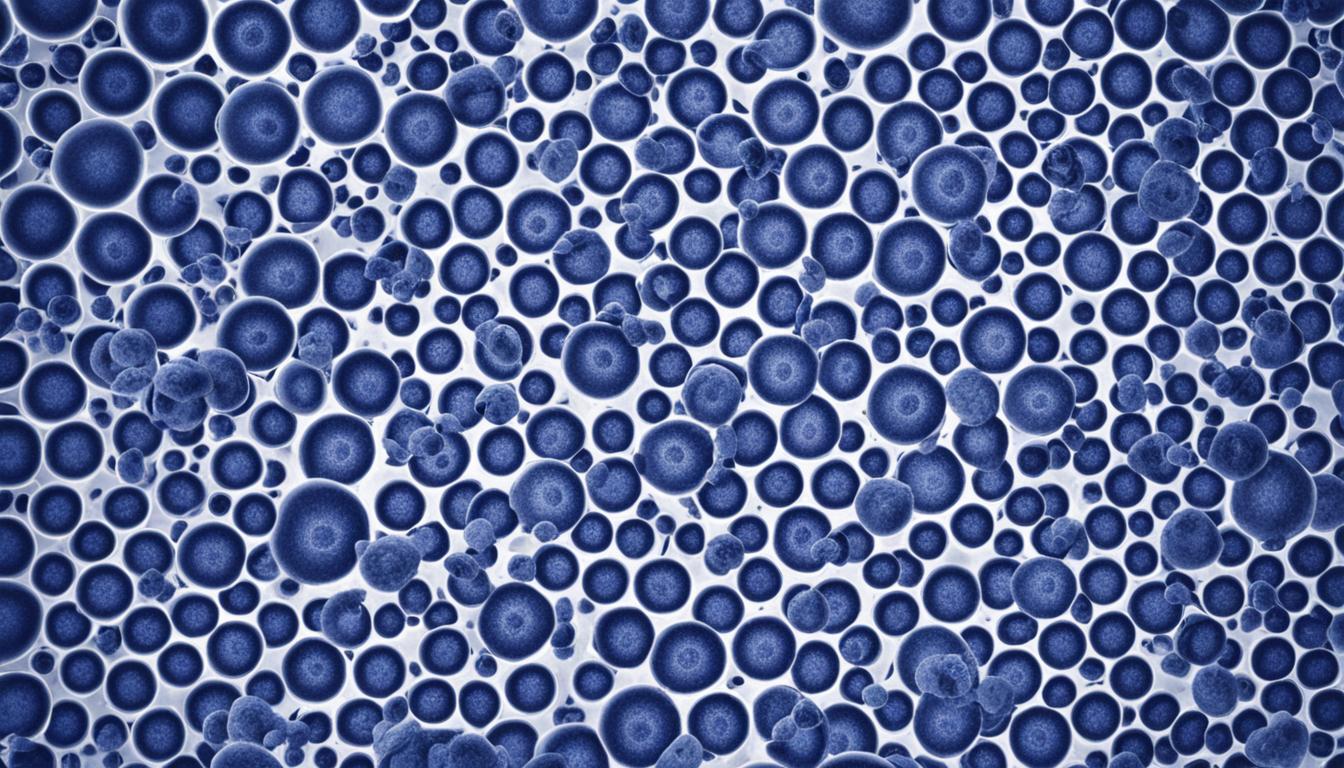Chronic lymphocytic leukemia (CLL) is a cancer that starts in the blood and marrow. It mostly affects older people. This cancer leads to too many lymphocytes, a type of white blood cell. It’s slow-growing, so the signs might not show early.
Many people with CLL notice their lymph nodes getting larger but feeling no pain. They might also feel tired a lot, have fevers, night sweats, lose weight, or get sick often. The cause isn’t clear, but age, genetic factors, race, and exposure to some chemicals might play a role.
CLL can lead to frequent infections and sometimes turn into a more severe cancer. There’s also a higher chance of getting other types of cancer and immune system issues. Finding CLL involves blood tests and examining the marrow under a microscope.
How we fight CLL depends on how far it has spread and how fast it’s growing. We often use chemotherapy, drugs that help your immune system, special drugs that target the cancer, or even a transplant of new stem cells. Stem cell treatment is still being looked into as a way to fight CLL.
Scientists are working hard to understand and treat CLL better. They’re looking at new ways to catch it early, treat it effectively, and keep discovering its secrets.
Key Takeaways:
- Chronic lymphocytic leukemia (CLL) is a type of cancer that affects the blood and bone marrow.
- CLL primarily affects older adults and is characterized by the abnormal production of lymphocytes.
- Symptoms include painless enlarged lymph nodes, fatigue, fever, night sweats, weight loss, and frequent infections.
- Risk factors for CLL include age, race, family history, and exposure to certain chemicals.
- Complications of CLL can include frequent infections, Richter’s syndrome, increased risk of other cancers, and immune system problems.
- Diagnosis involves blood tests and bone marrow aspiration and biopsy.
- Treatment options include chemotherapy, immunotherapy, targeted therapy, radiation therapy, surgery, and stem cell transplants.
- Ongoing research aims to improve diagnosis, treatment, and understanding of CLL.
Symptoms and Causes of Chronic Lymphocytic Leukemia
Chronic lymphocytic leukemia (CLL) is a type of blood cancer mostly found in older adults. It may not show symptoms early on. As time goes on, certain signs can start to show.
Symptoms of CLL
One of the first signs of CLL is having larger-than-normal lymph nodes. These may not hurt but can be noticed in the neck, groin, or armpits. Feeling tired or weak is another common symptom.
CLL can also cause fever and night sweats. These make sleeping hard and uncomfortable. Abdominal pain might be felt because of a swollen spleen. It can affect how much you want to eat and how you feel.
Some people might lose weight without trying. This happens when you eat less but your body needs more energy. This can lead to feeling weak and not as strong as before.
Additionally, getting sick often is a problem for those with CLL. They might catch colds or have problems with their bladder or lungs more than others.
Causes of CLL
The cause of CLL is not fully understood but it’s linked to changes in certain cells’ DNA. These changes make lymphocytes, a type of white blood cell, grow out of control. They gather in the blood and organs, causing issues.
Because of these faulty white blood cells, the body can’t make normal blood cells properly. This can lead to the problems seen in CLL. Scientists are working hard to understand these changes better. Their goal is to develop new treatments based on this knowledge.
| Common Symptoms of Chronic Lymphocytic Leukemia | Possible Causes and Mechanisms |
|---|---|
| Enlarged, painless lymph nodes | Accumulation of abnormal lymphocytes in the lymph nodes |
| Fatigue | Disruption of normal blood cell production |
| Fever and night sweats | Effects of the abnormal lymphocytes on the body’s temperature regulation |
| Abdominal pain | Enlarged spleen and associated discomfort |
| Weight loss | Reduced appetite and increased demand for energy |
| Frequent infections | Compromised immune system due to abnormal lymphocytes |
Diagnosis and Treatment Options for Chronic Lymphocytic Leukemia
To diagnose CLL, doctors first use blood tests. These tests check lymphocyte numbers and features in your blood. They look for abnormal cells that could show leukemia. Sometimes, a bone marrow test is needed for a clear diagnosis. This helps find out more about the disease’s stage and what might happen next.
Treating CLL depends on how far the disease has progressed. Sometimes, it’s best to keep an eye on it without starting treatment right away. If treatment is needed, a team of specialists will plan it together. Options include chemotherapy, immunotherapy, targeted therapy, or stem cell transplants. The goal is to pick a treatment that’s right for you and your health.
Choosing the right treatment considers many things. Your health, disease stage, and cell characteristics all matter. Leukemia research is ongoing. It aims to find better ways to treat CLL. So, doctors are always looking for new options to help patients with CLL.

